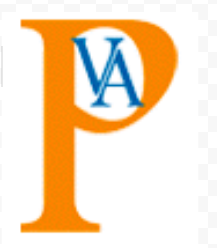The Future of EdTech Part 3: Big Data
Big data, a term the world is becoming more and more familiar with—and growing tired of just as quick. According to the ever-trusty free encyclopedia, Wikipedia, “Big data is the term for a collection of data sets so large and complex that it becomes difficult to process using on-hand database management tools or traditional data processing applications.”
A bit of a negative interpretation if you ask PVA. What isn’t captured in this definition is the vast amount of knowledge that a big data set encompasses, what can be learned from it, how it can be personalized and how it can be applied to education—not that the last part should’ve been in the definition, but we given the opportunity we would’ve added it.
At the front of the big data movement in education is the ability to personalize each child’s learning experience. But it doesn’t start there. We’ll start broad, with an entire school district and narrow it down. There is a multitude of information available, endless spreadsheets and graphs that point this way and that way. So in the learning realm, it might not be as strong a tool as many think, but it might be beneficial for budget allocation, placing educators, and establishing programs. Focus the data on one particular school and much of the same can be said about an individual school within the district as the district itself. Within one classroom, a teacher can see which lessons he or she needs to spend more or less time on—a vague definition of the asset, but still a valued one. Where big data really comes into effect is when it is personalized.
If the majority of the curriculum is online and the software is tracking friendly, educators have endless information to improve the child’s approach to a subject, their own approach to the child’s education, which learning styles prove successful, where they need to focus more time, among other metrics.
For example, a student does a level one algebra problem at the beginning of the course. She gets the answer wrong the first time after 10 seconds of solving. Then, she gets it correct on the second try after a total of 40 seconds on the problem. The incorrect answer shows how/why the student got the answer wrong the first time and then how long it took her to solve it correctly. If the same level problem is solved later in the assignment on a first attempt, it would show progress. Several wrong answers would not only show where the student’s time needs to be focused, but what they’re doing incorrectly and which learning/teaching approach is not suited for them. Based on this information the educator could redirect their methods and assign specific problems for the student to work on to improve. The same could be said for a quick-learning student who isn’t being challenged. This information could also expose a child who lacks effort, as several quick wrong answers might indicate guesses and disinterest.
Big data is the actual future of education technology. EdTech, in its’ own right, is advancing in thanks to big data technology customizing the learning process for specific demographics, learning levels, and teaching approaches.
Here you can learn more about big data and its’ future in education.

Recent Comments